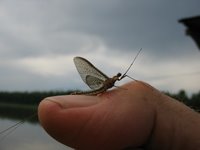Gone for a Week
 to a life of leisure doing other things – sure, right. We’ll see.
to a life of leisure doing other things – sure, right. We’ll see. 
What would be the link between the Atchafalaya (and Riverlogue) and a cruise on the seas to the south? Why, that’s where the Atchafalaya water goes, of course. It kind of reminds you that all of this stuff we see out there is connected in a real way, including us. Atchafalaya water is Gulf water, is Caribbean water, is cloud water, is Atchafalaya water again, and on and on and on. Kind of makes you understand that you belong to something very big without making you feel very small. Like, all links in a chain are equally important, even though the chain is very long.


Anyway, the cruise went from Galveston to Key West to Grand Cayman to Cozumel and back to Galveston. The main feature on these ever popular aquatic excursions is always the food, and here is a picture to prove we indulged like all the rest of the passengers – but maybe a little less than some. The primary biologically notable thing was the commercial sea turtle farm on Grand Cayman. It was one of those “This can’t be real!” discoveries. It was begun in the 1960s and it produces green sea turtles for human consumption.
 Some of the original female turtles are still producing eggs on the man-made beach provided for nesting, and one weighs 575 pounds. The holding ponds are seething with these big animals. The pond to the left of Carolyn (above) gives some idea of how many there are. There are also rearing ponds that hold the two-year olds (I'm holding one), including the percentage of them that are released back to the ocean each year, and there are other ponds that hold the turtles that will be harvested. The latter appeared to be in the 30-40 pound range. Someone (a young man with a lady to impress) tried to handle one of the big turtles and just about got his arm broken by one of the big flippers. He did impress the security guards, not sure about the lady.
Some of the original female turtles are still producing eggs on the man-made beach provided for nesting, and one weighs 575 pounds. The holding ponds are seething with these big animals. The pond to the left of Carolyn (above) gives some idea of how many there are. There are also rearing ponds that hold the two-year olds (I'm holding one), including the percentage of them that are released back to the ocean each year, and there are other ponds that hold the turtles that will be harvested. The latter appeared to be in the 30-40 pound range. Someone (a young man with a lady to impress) tried to handle one of the big turtles and just about got his arm broken by one of the big flippers. He did impress the security guards, not sure about the lady. It is said that the turtle (meat and eggs) is a strong aphrodesiac. Perhaps he really had the right idea. I had a cup of turtle soup - no noticeable effect. Hmm.
It is said that the turtle (meat and eggs) is a strong aphrodesiac. Perhaps he really had the right idea. I had a cup of turtle soup - no noticeable effect. Hmm.One more thing, Cancun is no longer open for Spring Break. After what happened to us last year, we tend to forget that other places had hurricanes too. The one that hit Cancun stayed over them for three days, not several hours like most of ours do, but three days of hurricane winds and rains. The place is basically destroyed, and isn't even open for cruise ships at all. For a place that depends on tourism for just about 100% of its income, that's a problem. If you are thinking of going to the Mexican Riviera East, go to Cozumel and ferry to Playa del Carmen, not Cancun.
All in all, a good trip. On the more local front, the river dropped a lot more than was predicted for last week. My boat ended up in the wrong place and wrecked the walkway to the dock. To fix this you have to get in the mud and crawl around. Not too bad, the water is cool. The pics show before and after fixing the problem.


Also, I left eight filled quart feeders for the hummers, knowing it wouldn’t be enough. And it wasn’t – all eight were empty when we got back. I’m looking at hummers at the window feeding on newly filled feeders now. There really is a lot of natural food, helped by the fact that we had almost no winter.
A mayfly hatch happened last night. That is such an impressive thing to see! Every single thing
 that eats insects is out catching a breakfast of mayflies this morning – swallows, kites, vireos, warblers, dragonflies and many others. Even Napoleon couldn’t resist chasing the insects. Wow, the sheer numbers reminds you of the shrimp migration in the river, millions of things to eat.
that eats insects is out catching a breakfast of mayflies this morning – swallows, kites, vireos, warblers, dragonflies and many others. Even Napoleon couldn’t resist chasing the insects. Wow, the sheer numbers reminds you of the shrimp migration in the river, millions of things to eat.The river is at 5.7 feet on the Butte La Rose gauge, and will stay there for at least five days. The Ohio and Mississippi are both falling at the headwaters. Glad to be home.
Rise and Shine, Jim
























 but almost. There is a concrete apron that borders the structure on both banks. From the bank along these two aprons to about three feet out the water runs fast but not with turbulence, more or less like a very fast, smooth slide. Fish are trying to run up these rapids in numbers you would have to see to believe, most frequently right along the edge of the aprons in this slick water. I’m not talking about all little fish either. So, the birds line up along this apron and watch the slick, fast water going by and when some small shad or whatever is spotted struggling up the current…snap, gone. The birds actually stand a couple inches deep, the fast water building up in little walls on the upcurrent side of their legs. This means that all these little and big fish struggling up pass within about 12 inches of the birds legs. A lot of the fish are bigger than the egrets. Most of the larger fish I saw were gars, mostly shortnosed and spotted. They are bunched up at the bottom of the turbulent water by the hundreds. Sometimes they get to going so fast in the fast water that they get the angle wrong and launch themselves several feet up the concrete apron – taking one or two egrets with them! The birds just squawk and the fish slide back into the water to be swept downstream for another try. I don’t know what is so attractive about being above the structure rather than below it. There is something, though. Not all the fish are gars. I was sitting on the apron on my side of the structure, watching the fun through binoculars, when a 20 (?) pound carp launched itself into the air and straight at me. It fell just short and splashed back into the water, but I guarantee you it got my attention.
but almost. There is a concrete apron that borders the structure on both banks. From the bank along these two aprons to about three feet out the water runs fast but not with turbulence, more or less like a very fast, smooth slide. Fish are trying to run up these rapids in numbers you would have to see to believe, most frequently right along the edge of the aprons in this slick water. I’m not talking about all little fish either. So, the birds line up along this apron and watch the slick, fast water going by and when some small shad or whatever is spotted struggling up the current…snap, gone. The birds actually stand a couple inches deep, the fast water building up in little walls on the upcurrent side of their legs. This means that all these little and big fish struggling up pass within about 12 inches of the birds legs. A lot of the fish are bigger than the egrets. Most of the larger fish I saw were gars, mostly shortnosed and spotted. They are bunched up at the bottom of the turbulent water by the hundreds. Sometimes they get to going so fast in the fast water that they get the angle wrong and launch themselves several feet up the concrete apron – taking one or two egrets with them! The birds just squawk and the fish slide back into the water to be swept downstream for another try. I don’t know what is so attractive about being above the structure rather than below it. There is something, though. Not all the fish are gars. I was sitting on the apron on my side of the structure, watching the fun through binoculars, when a 20 (?) pound carp launched itself into the air and straight at me. It fell just short and splashed back into the water, but I guarantee you it got my attention.









